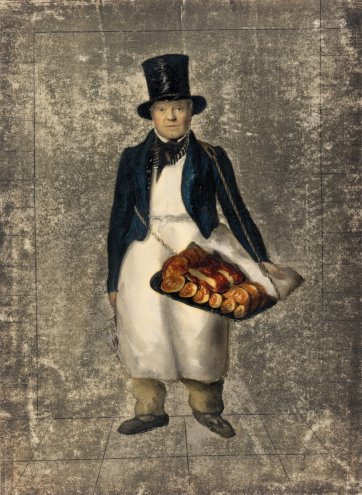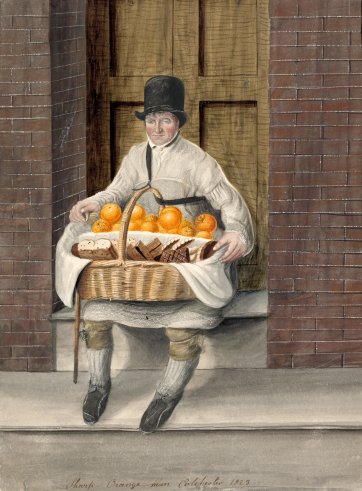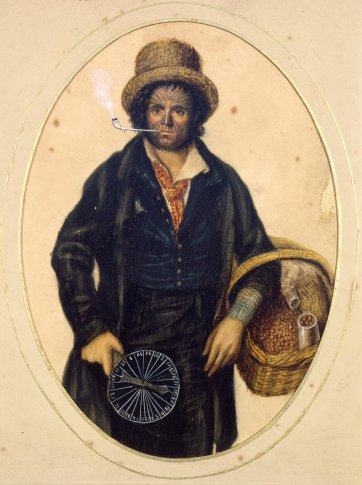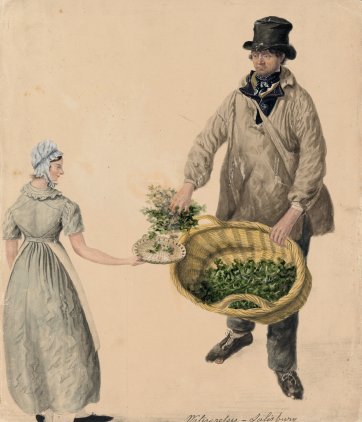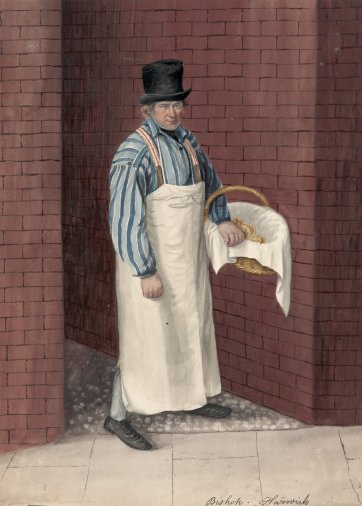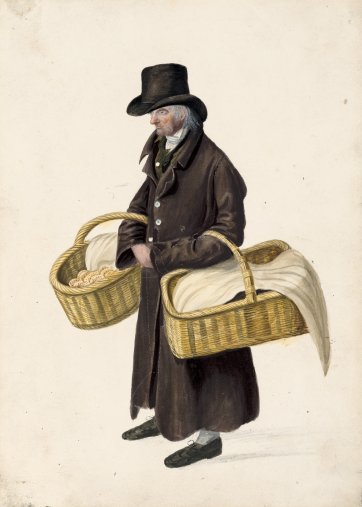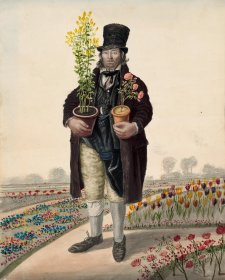With many living in lodging-houses without access to a stove or even a cooking fire, the late Georgian and early Victorian working classes often bought their food ready-made. Some ate in ale-houses, chop-houses and ‘penny pie shops’, but the journalist Henry Mayhew, writing around 1850, observed that ‘men and women, and most especially boys, purchase their meals day after day in the streets.’
‘The coffee-stall supplies a warm breakfast; shell-fish of many kinds tempt to a luncheon; hot-eels or pea-soup, flanked by a potato “all hot”, serve for a dinner; and cakes and tarts, or nuts and oranges, with many varieties of pastry, confectionary and fruit, woo to indulgence in a dessert…’
Dempsey depicts a number of street-food sellers, from a ragged hawker of watercress (sometimes known as ‘poor man’s bread’) to the prosperous Durham fishmonger Thomas Archbold; most prominent are the pastry-sellers, their pies, buns, muffins and oranges arrayed in covered trays and baskets.

